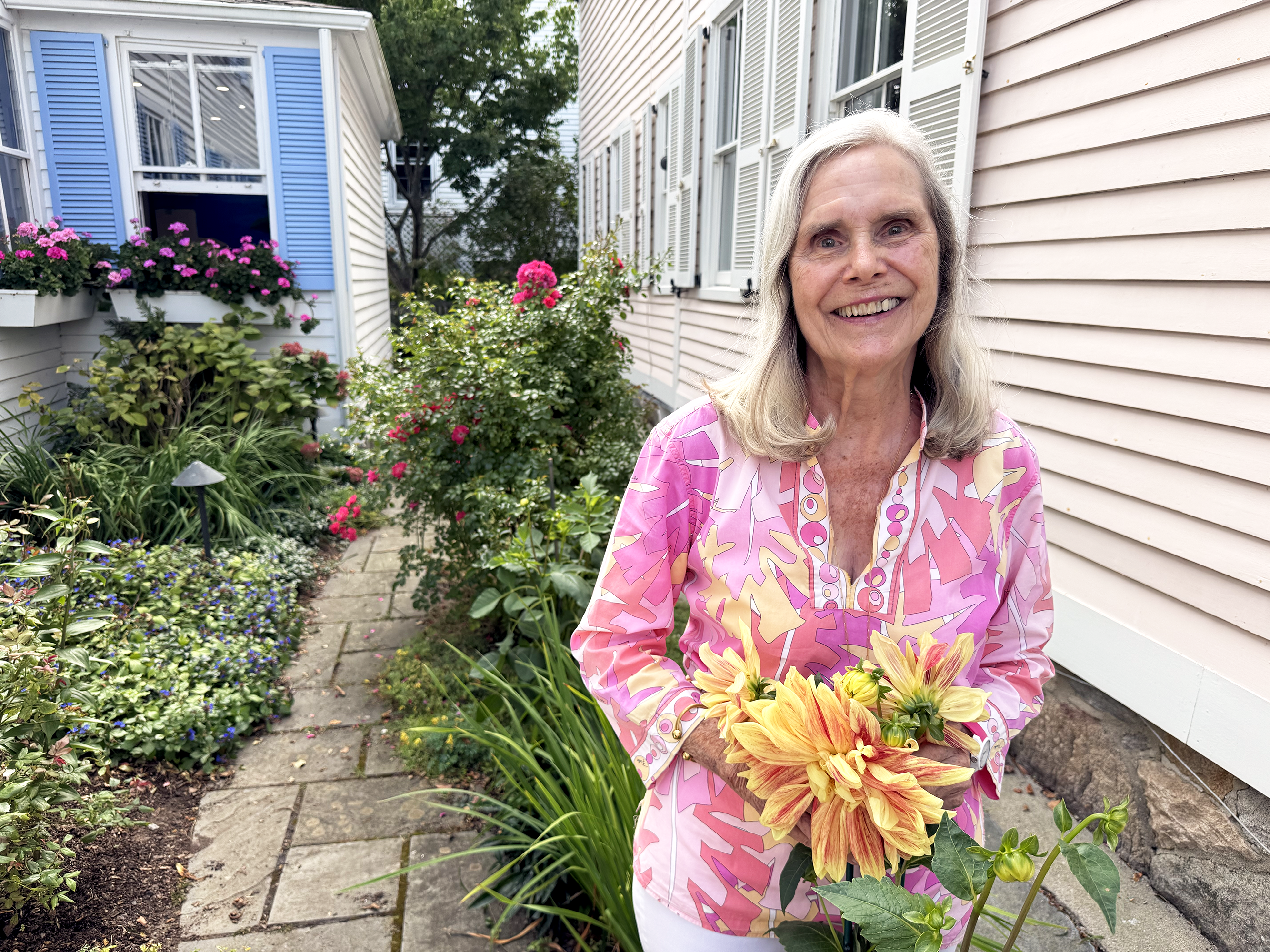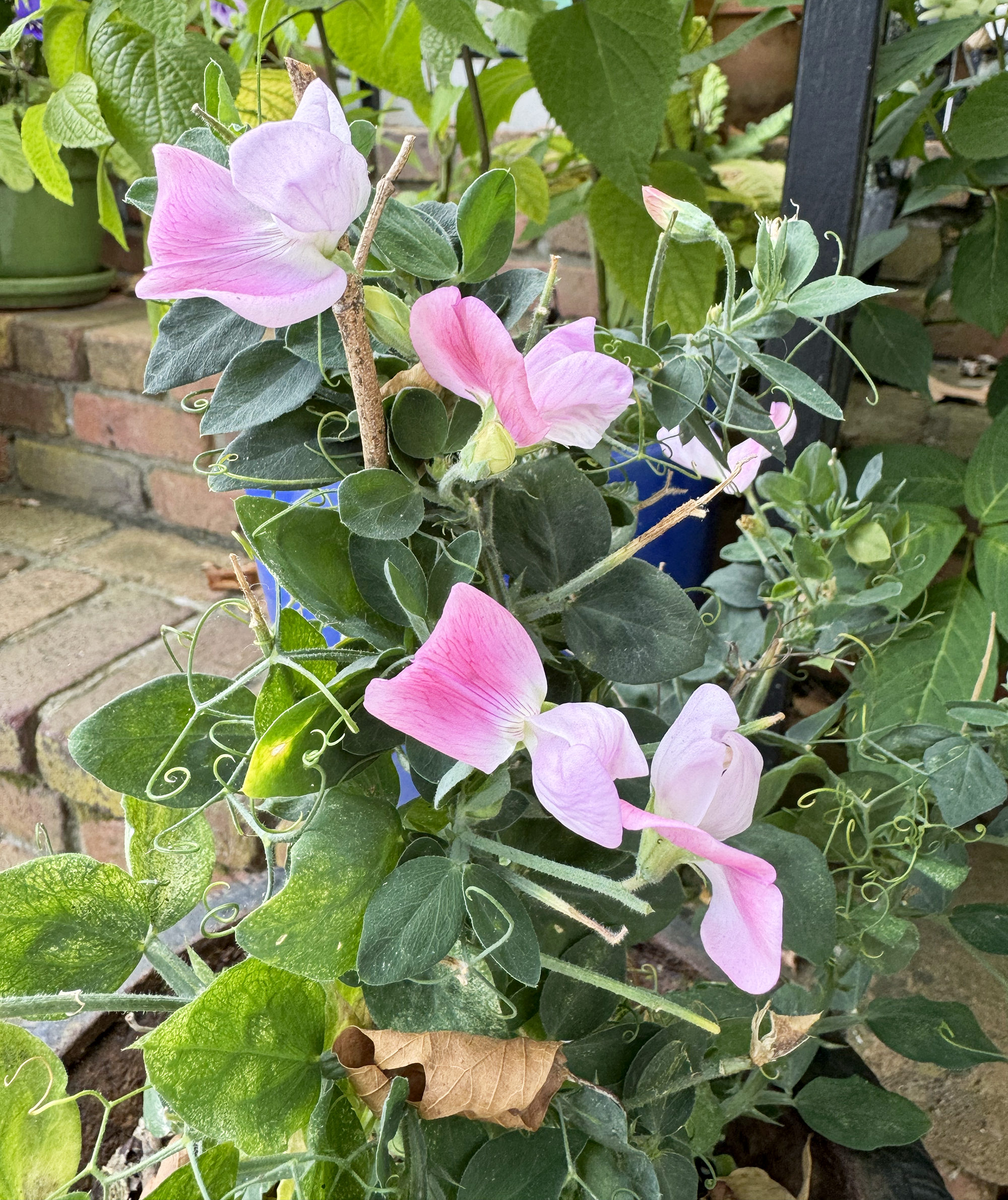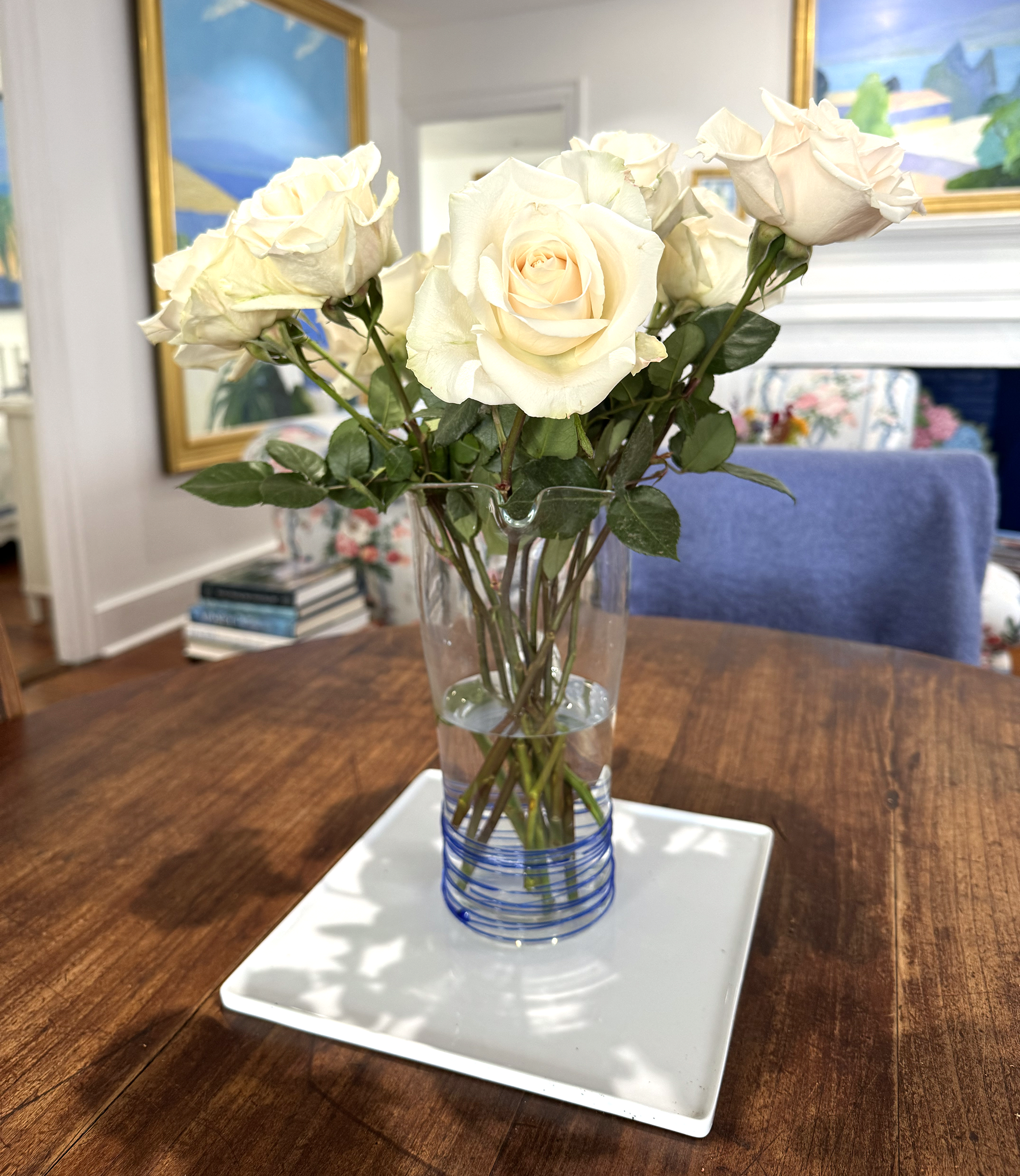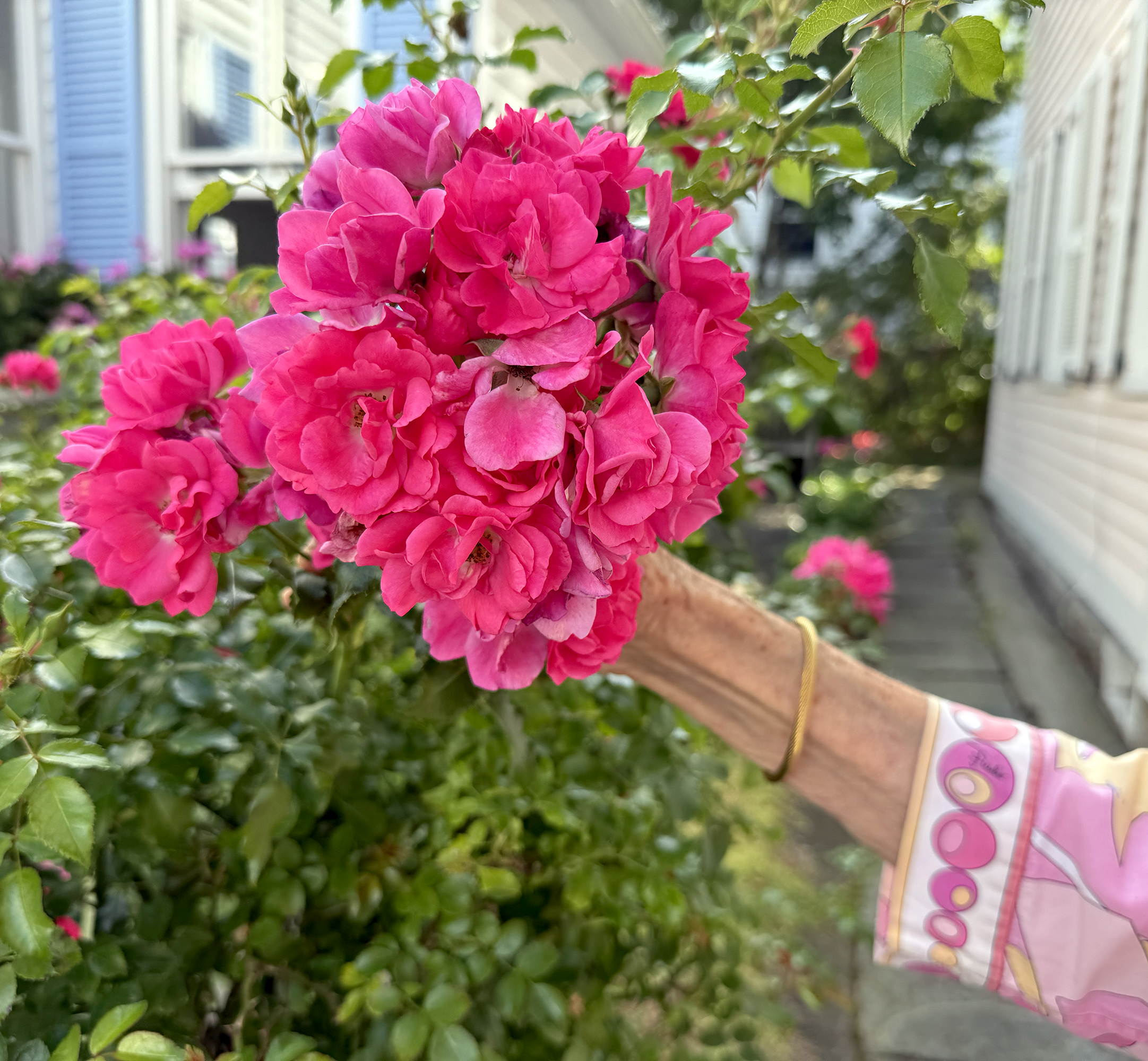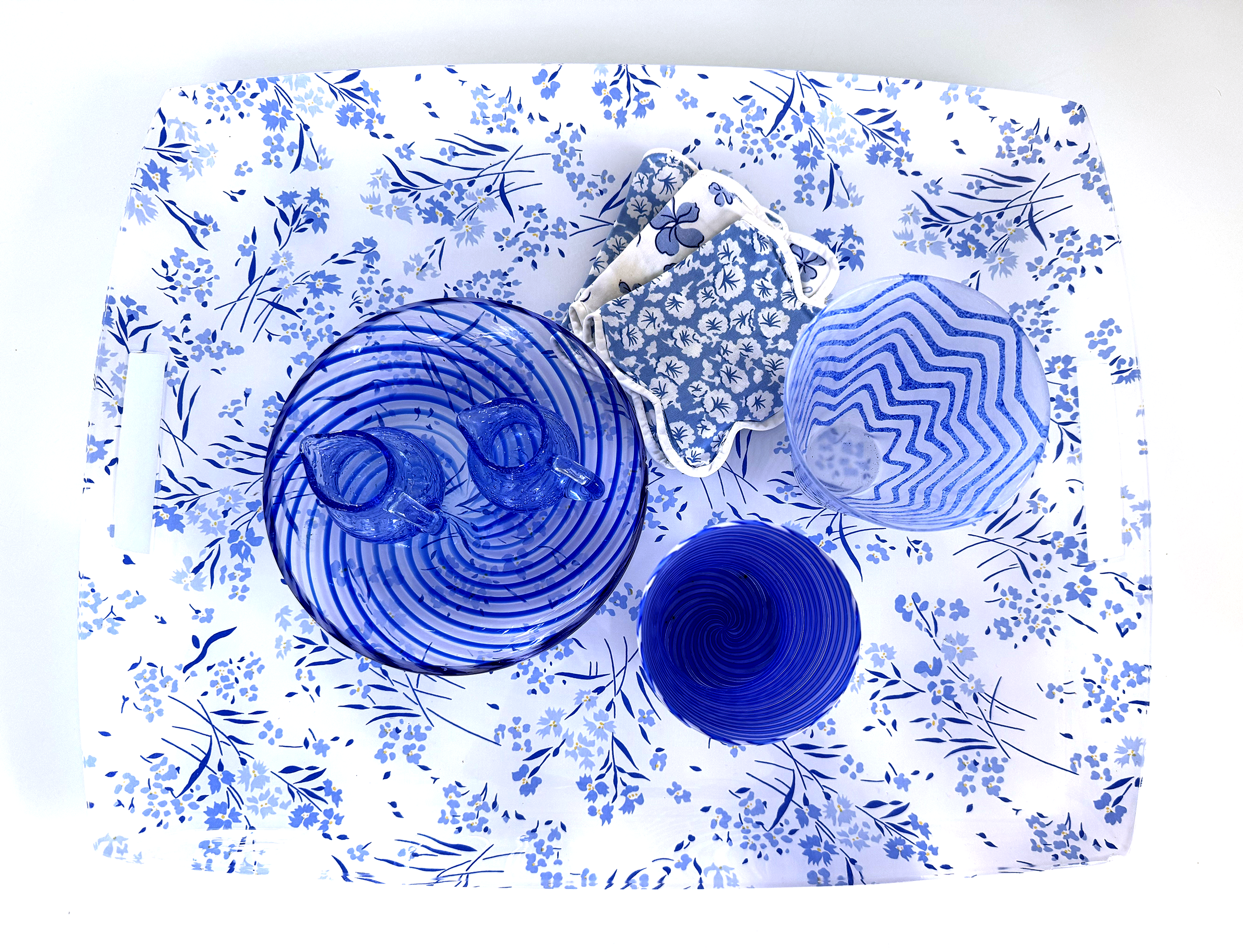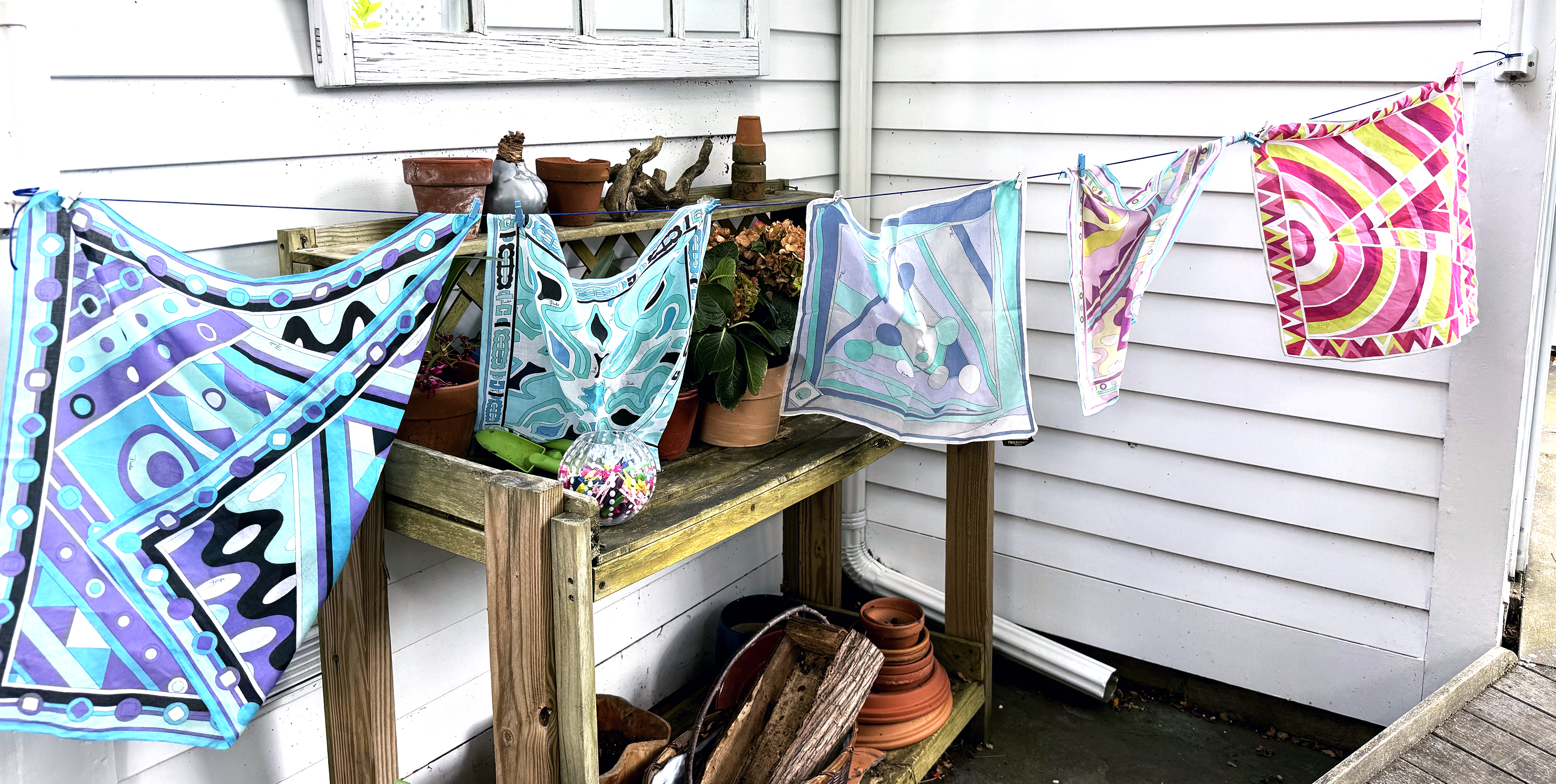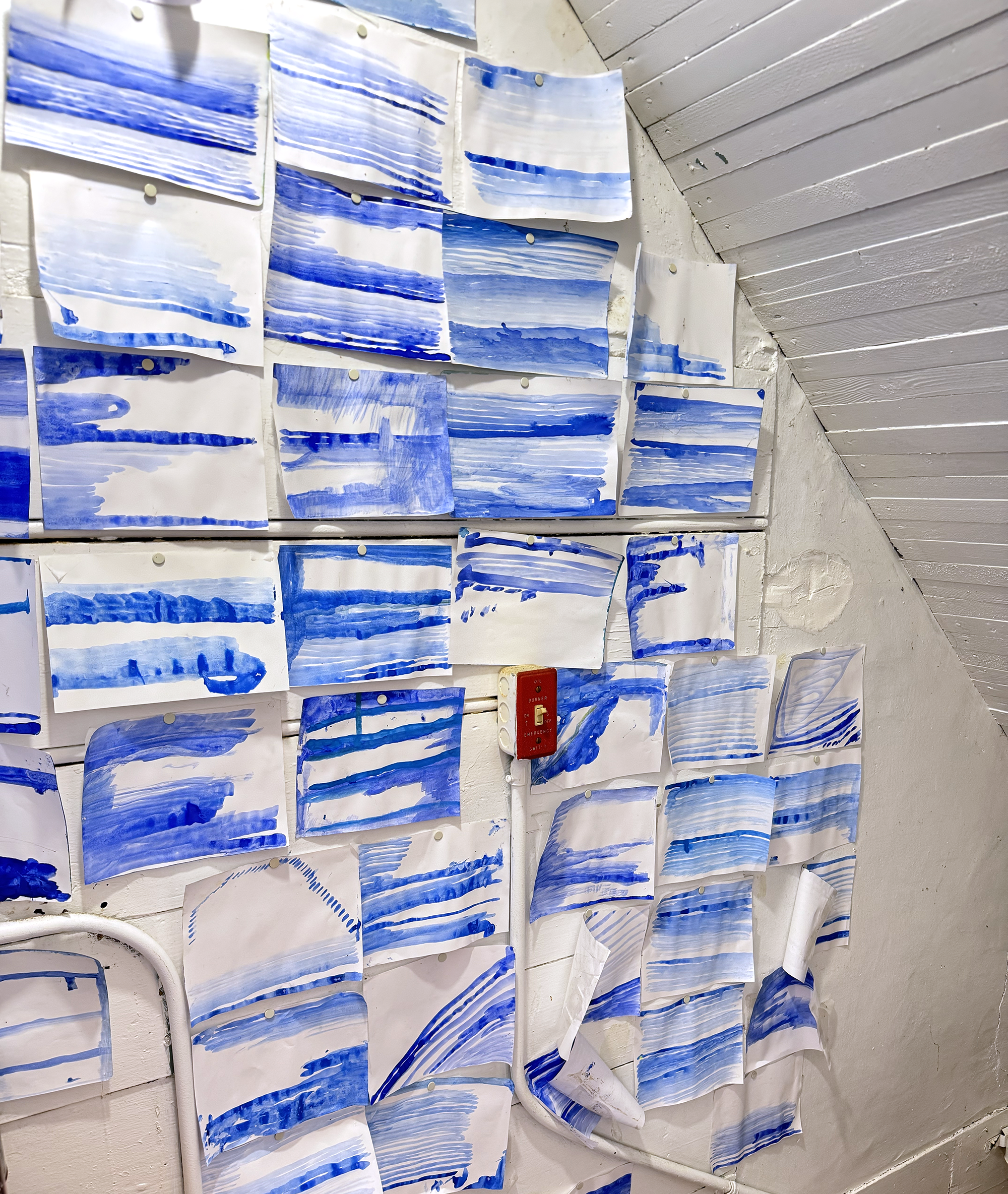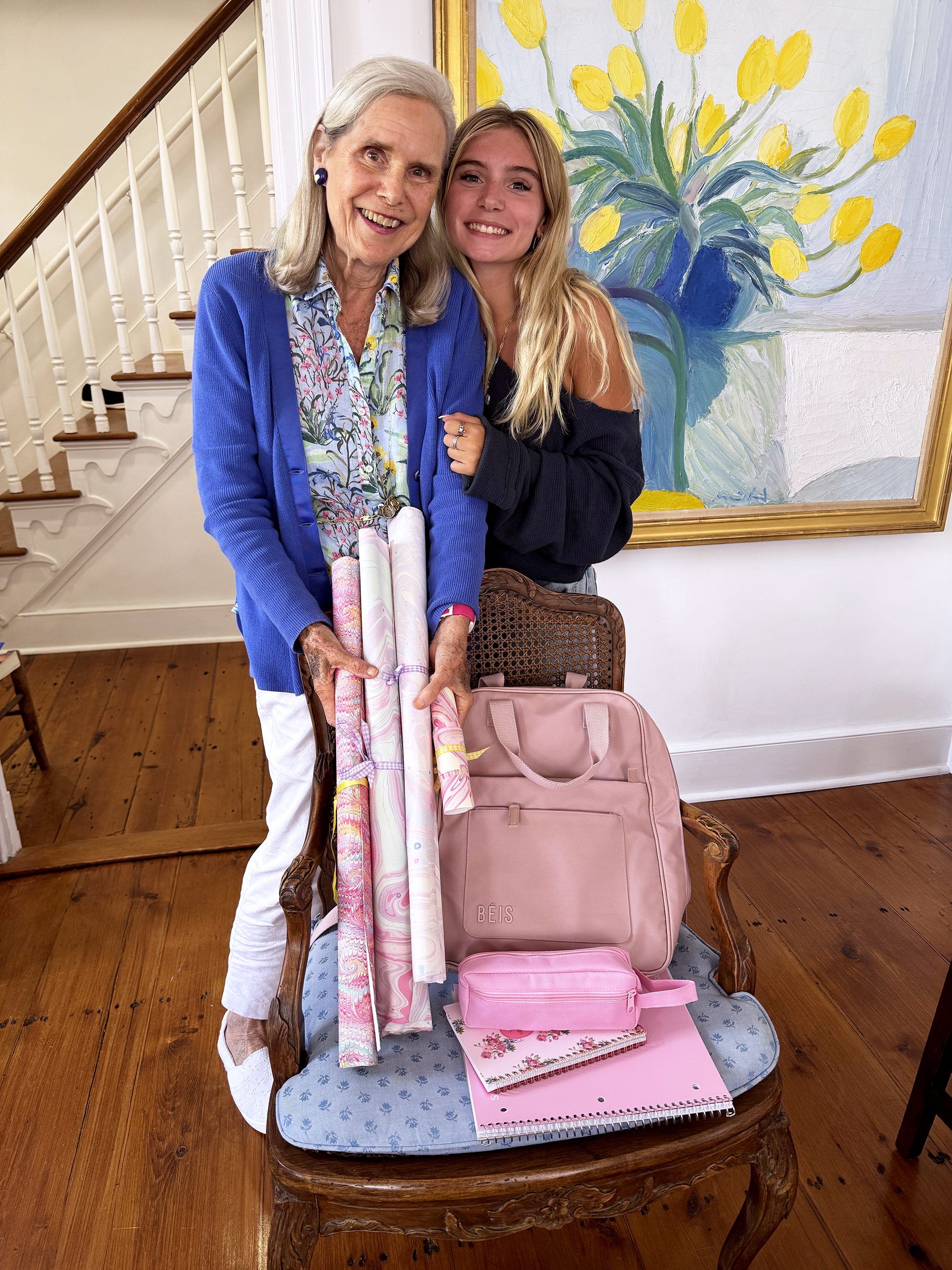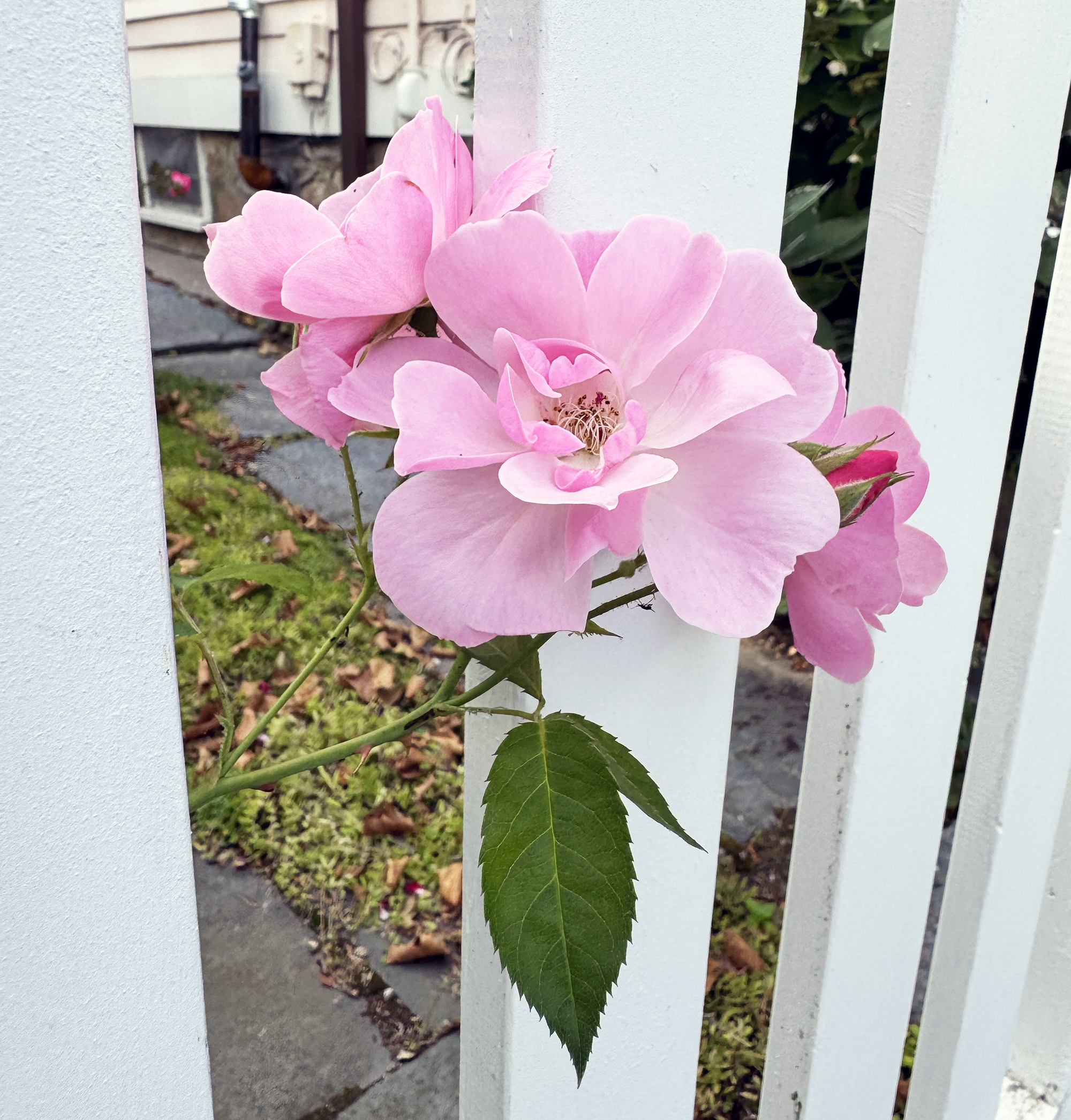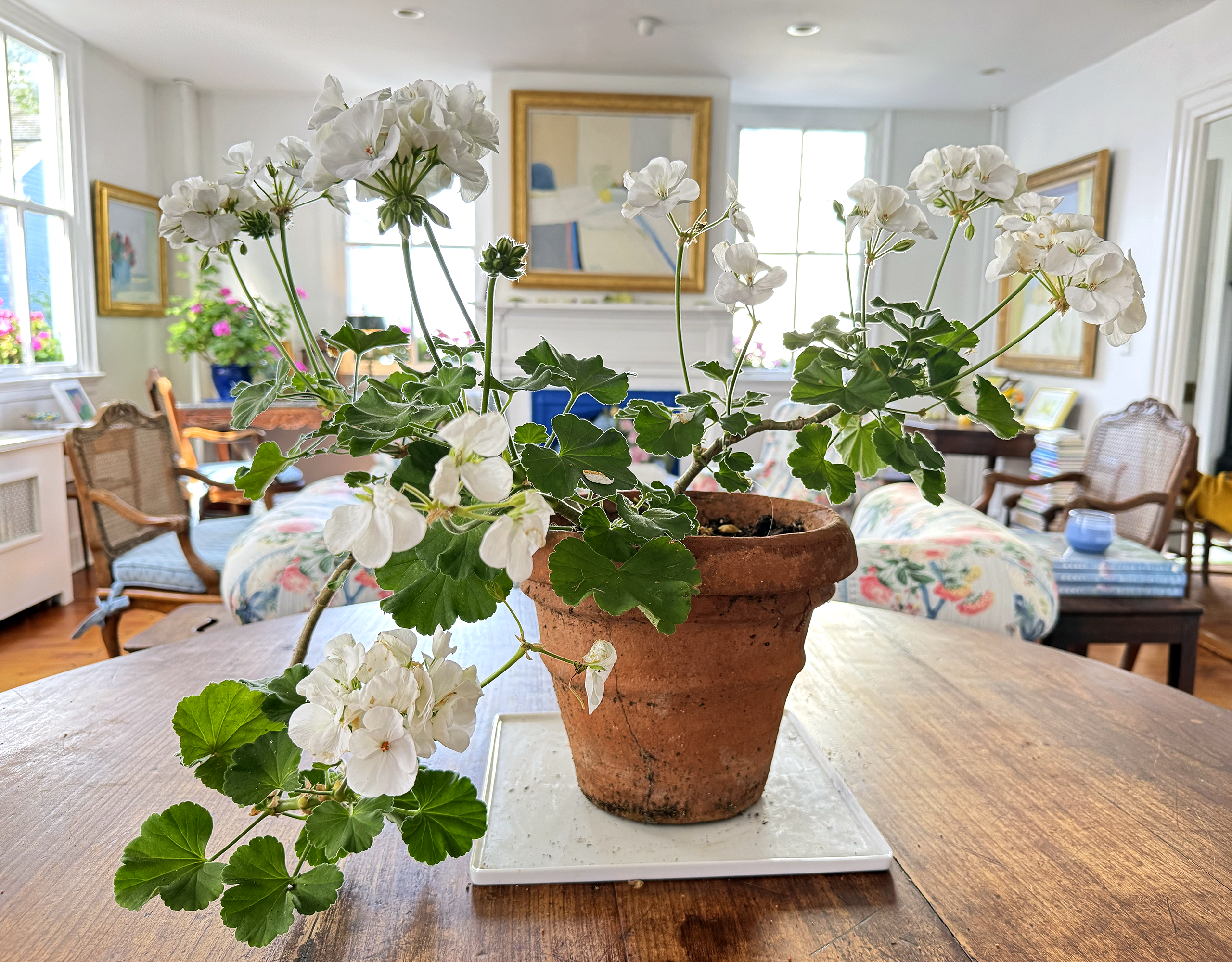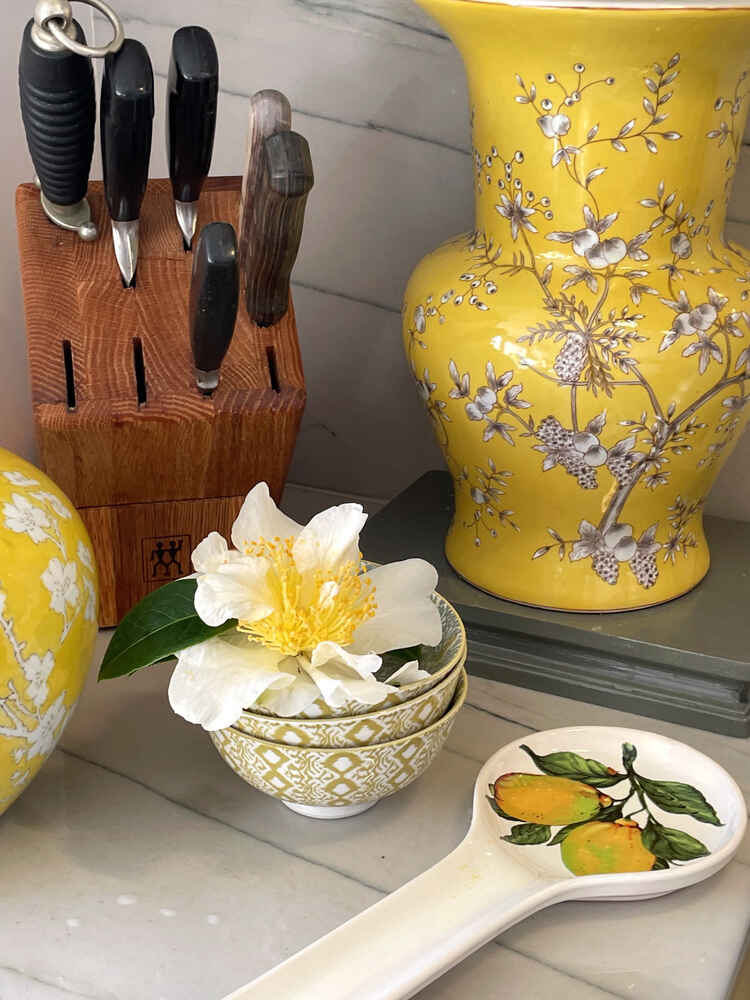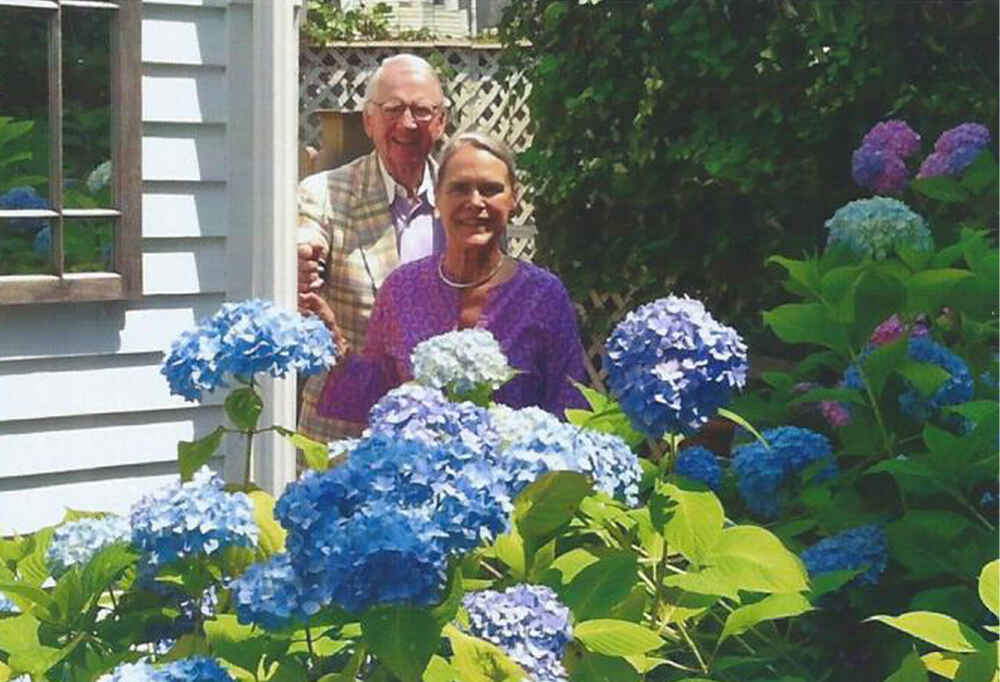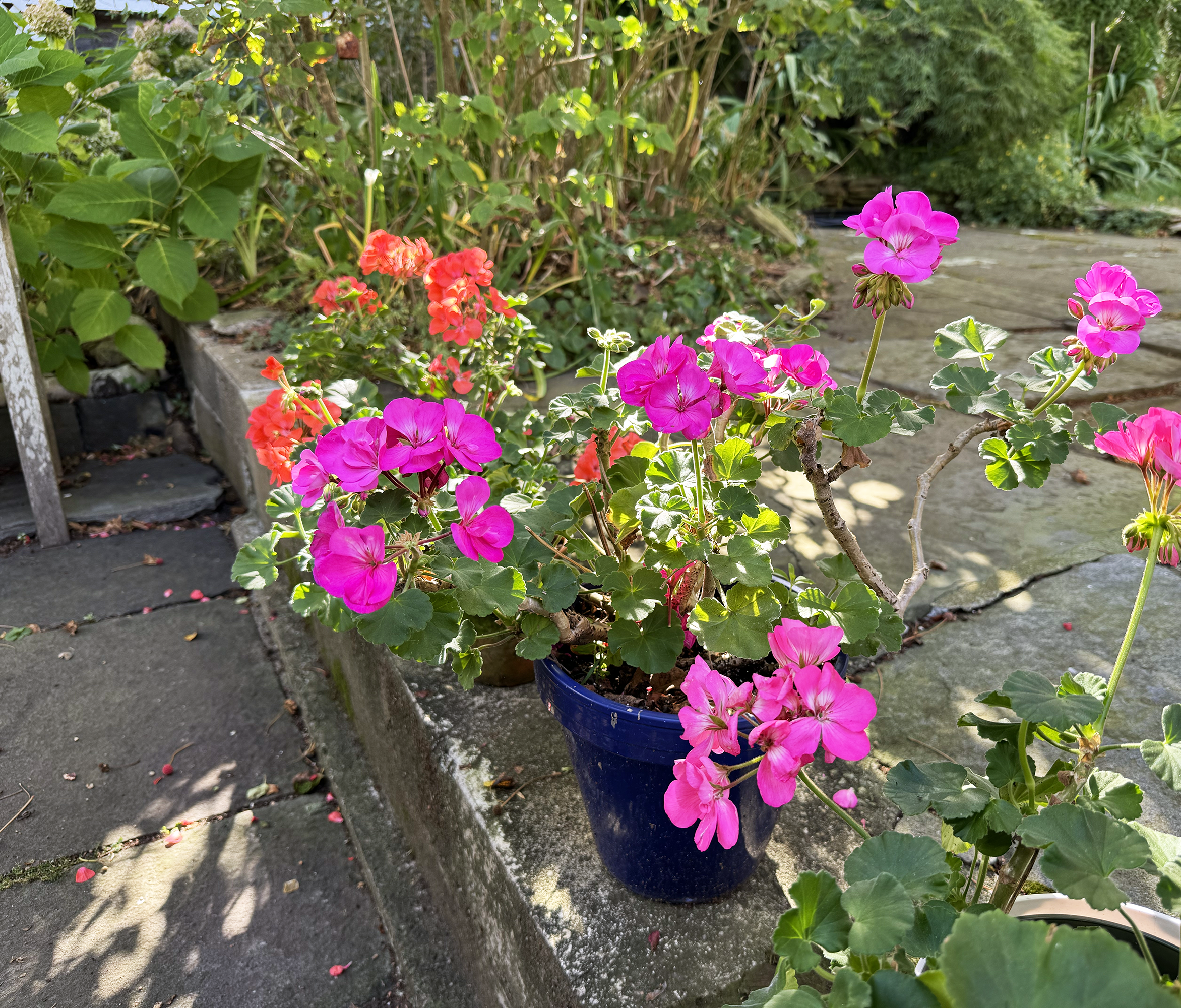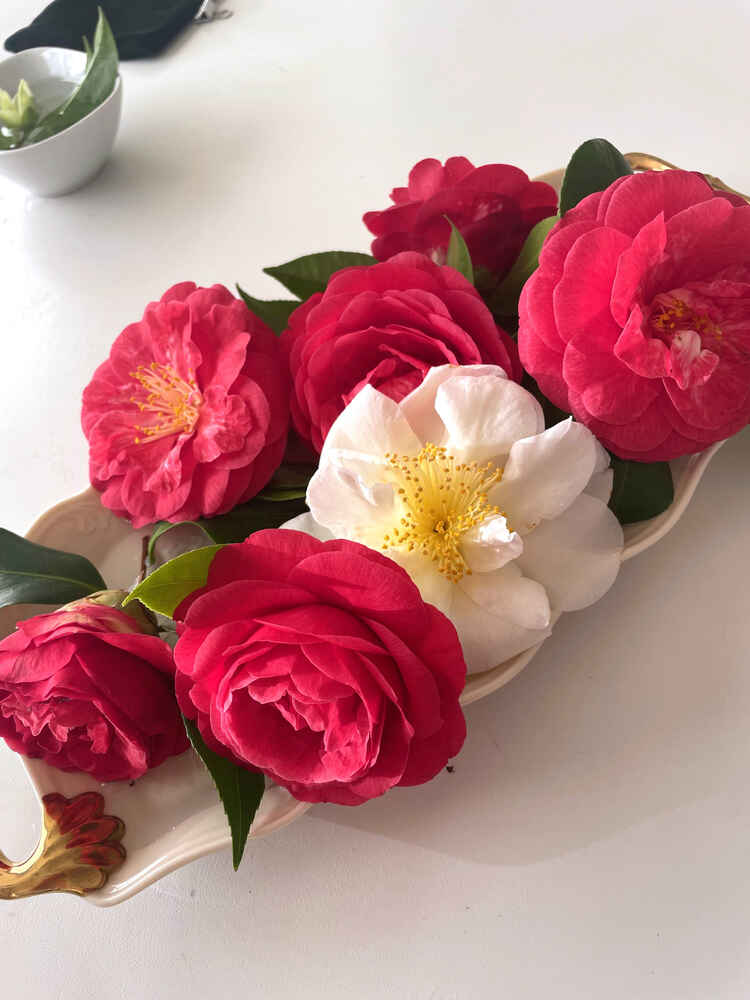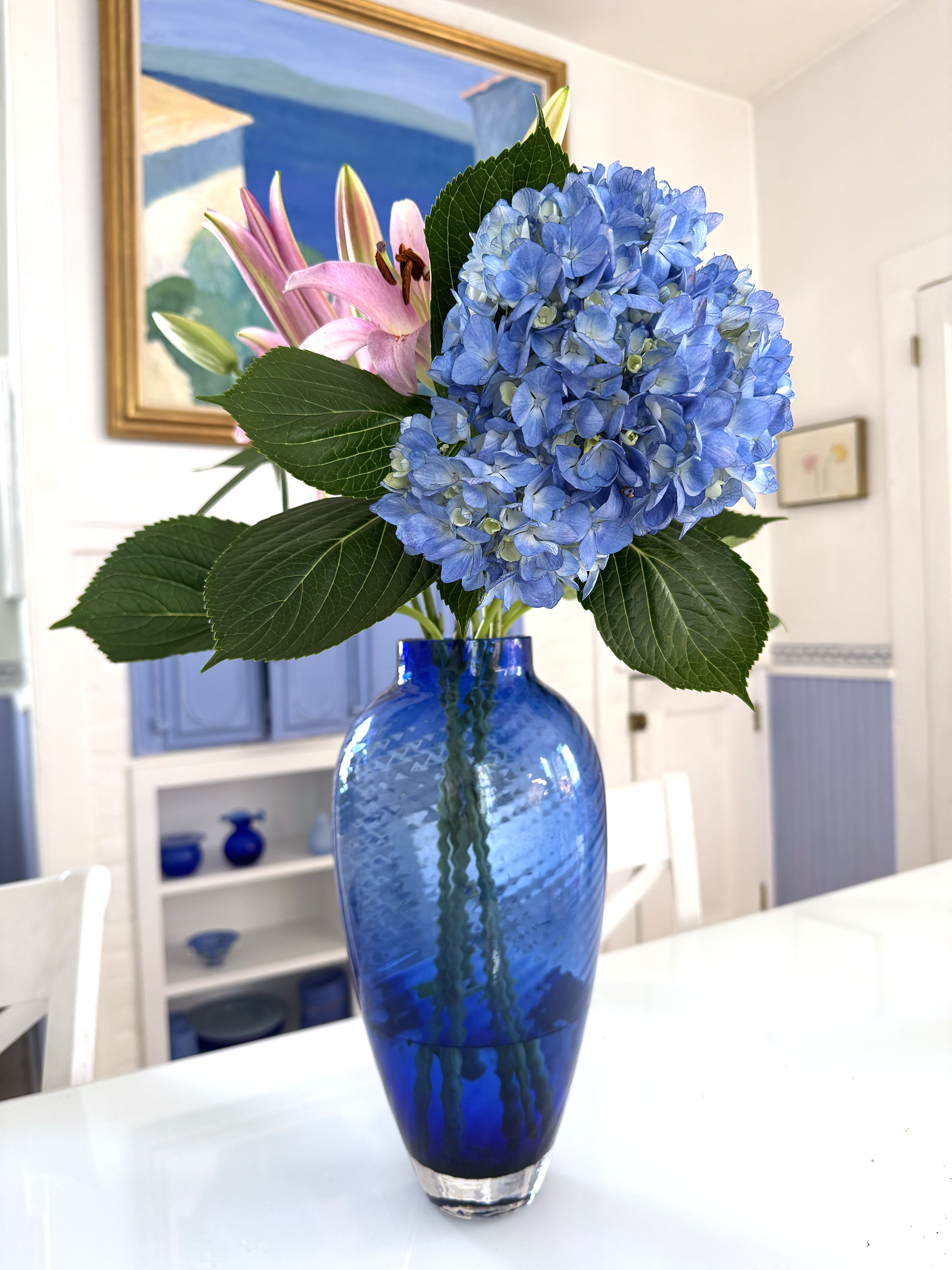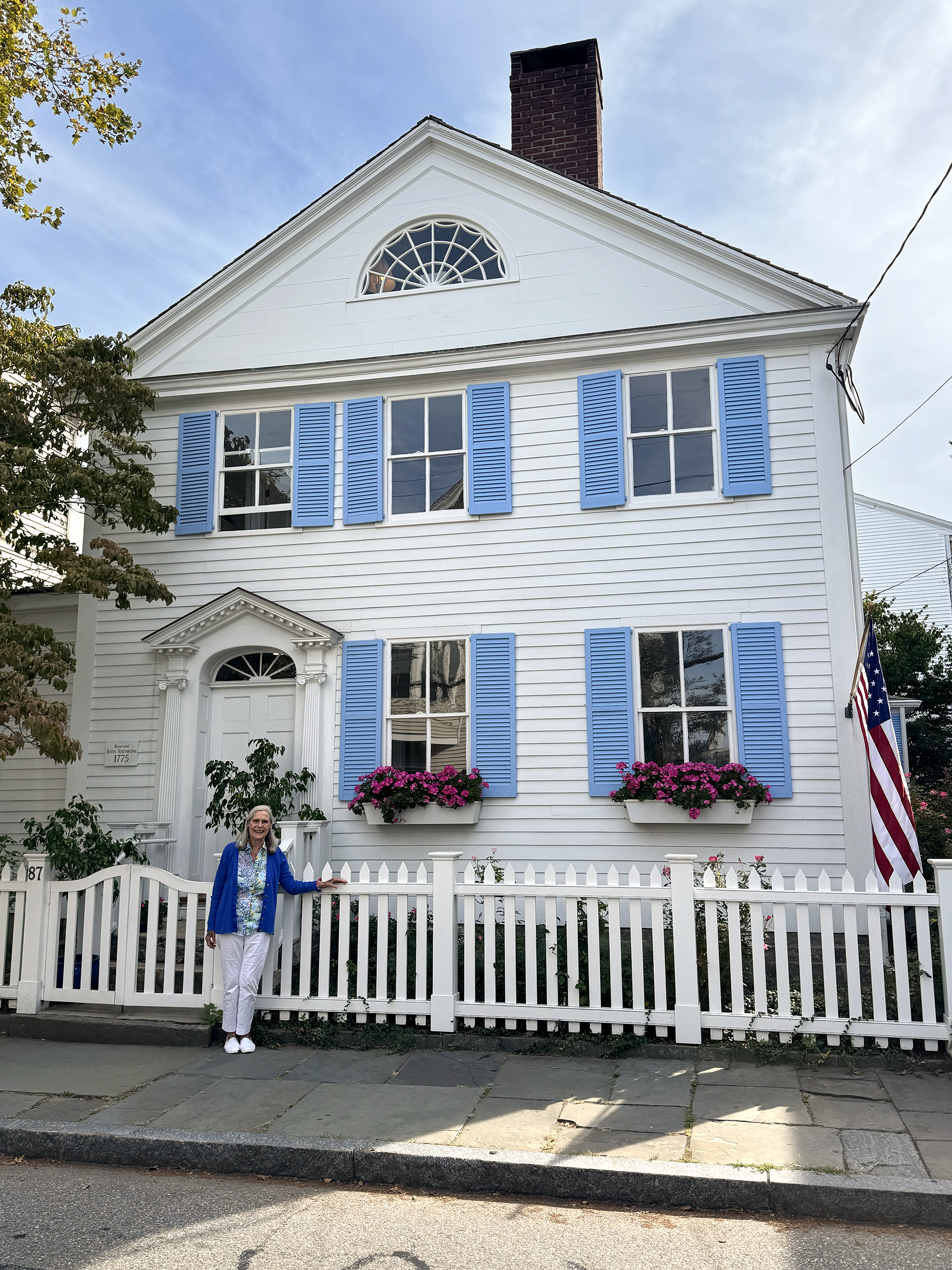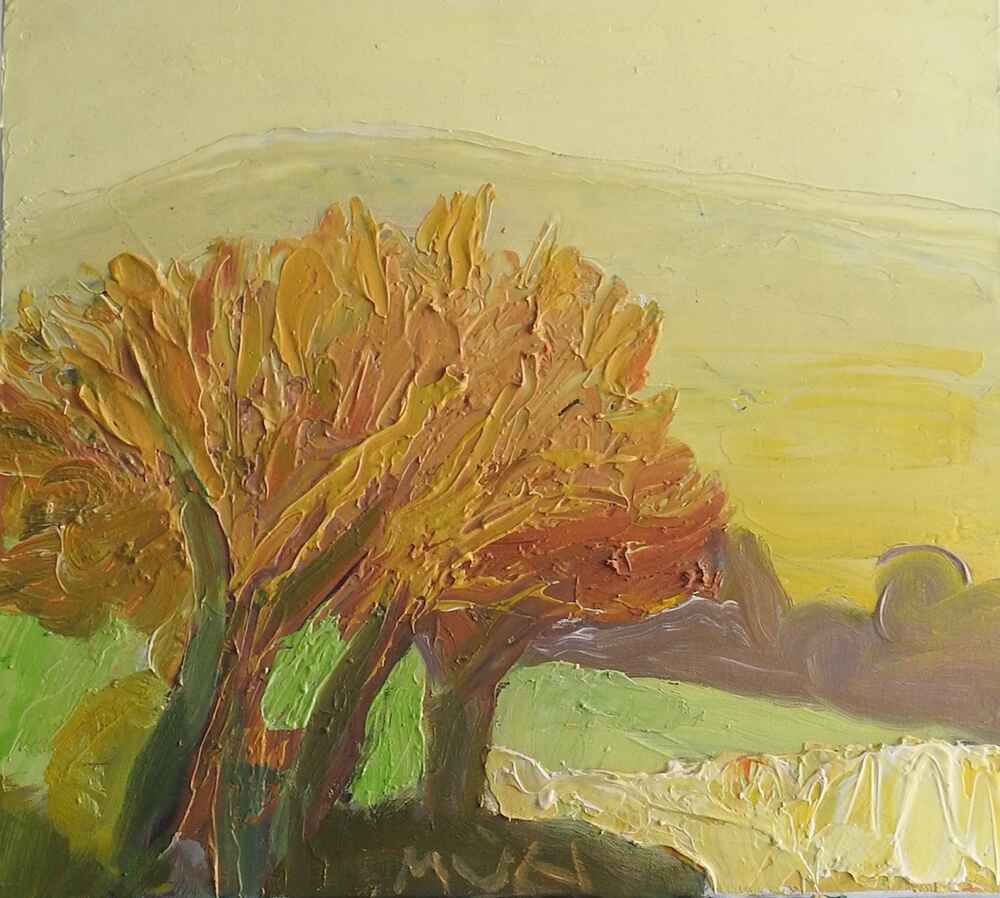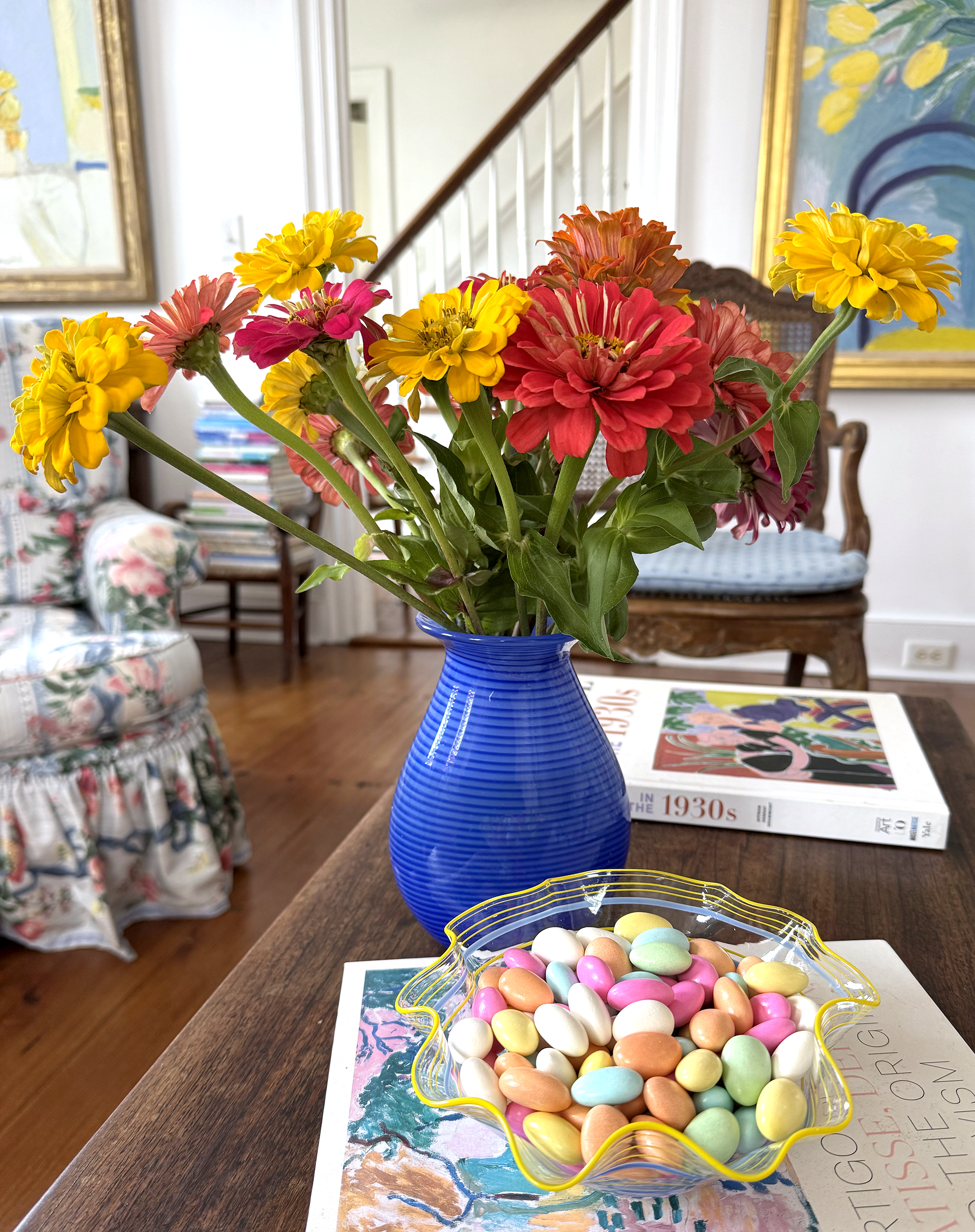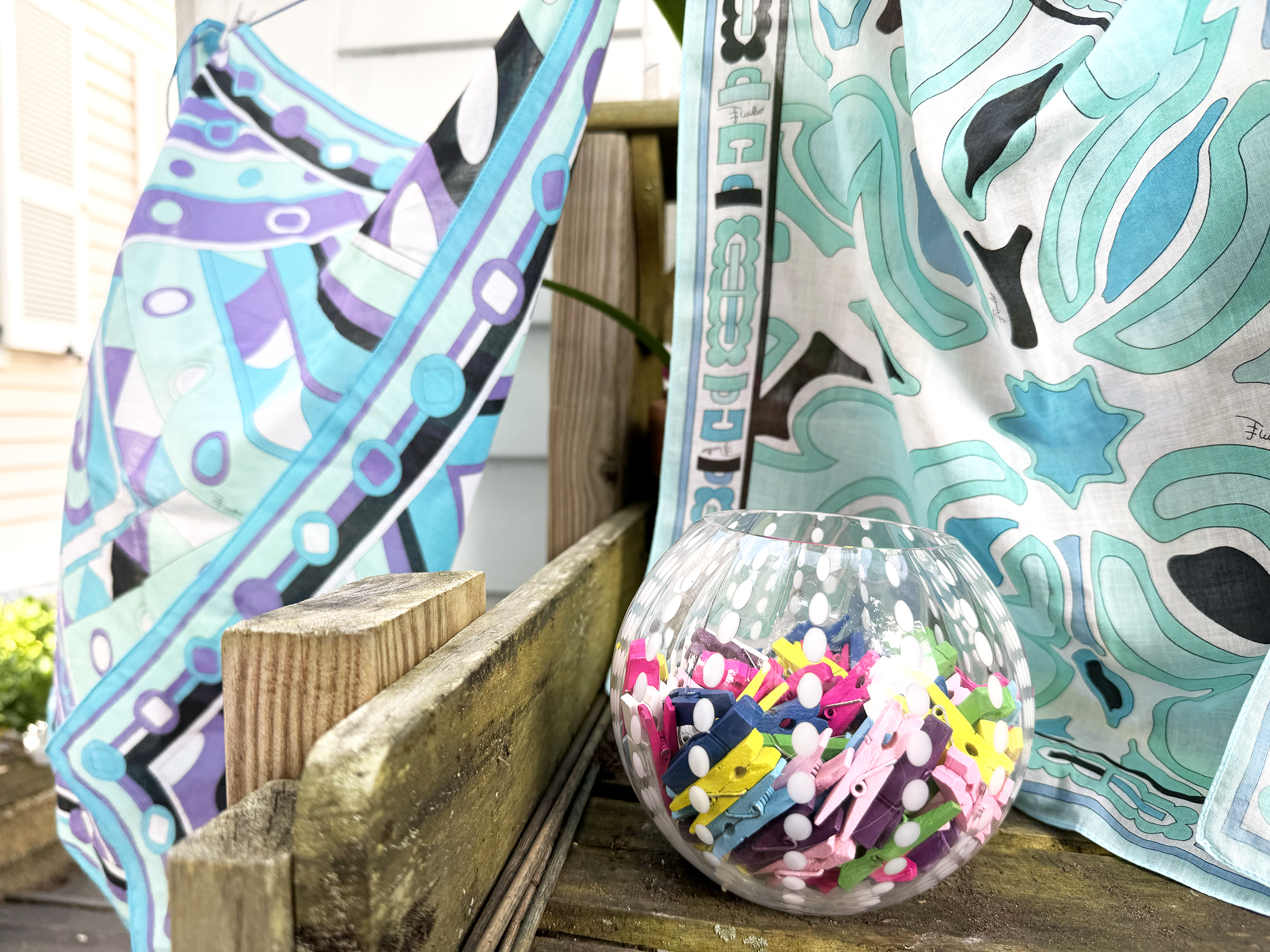AUTHOR | SPEAKER | PHILOSOPHER | DESIGNER
September 2025
Dear Friends,
I love you!
Happy September song! The month of September holds sacred memories for me. Eleven years ago, on a fresh September afternoon, Peter took his last breath. I was by his side; we were holding hands.
This photo of Peter and me was taken by our dear friend Kerri one month to the day before he died. I remember that moment; I can recall the entire day vividly. Emily Dickinson understood “that it will never come again is what makes life so sweet.”
In these 11 grace years, years rich with all of Peter’s essence, our love continues to be the fountain of my understanding of life’s precious gifts. As we always said when we were so happy, in the moments we were bursting, “Is this it? This is it!”
I’m often asked, “What do you do?” or “What do you do to keep yourself busy?” Lao Tzu had the answer half a century before Christ: “The way to do is to be.” I was sitting in the shade on a bench on Water Street across from Tom’s News, having just picked up the paper. Friends saw me and wanted to walk me home. I wanted to be just where I was. I’d been home.
I was meditating, observing the infinite blue sky with a fireworks display of animated cotton-candy shapes. A man came up to me: “You look so peaceful. The art of being. You’re being. Enjoy yourself.” He was smiling as he joined his two friends, and he said, “I’m ‘being’ too.”
Emily Dickinson came to mind at that moment: “To live is so startling, it leaves but little room for other occupations.”
She had something in common with Henry David Thoreau – knowing how to be present. "Now or never!” Thoreau wrote. “You must live in the present, launch yourself on every wave, find your eternity in every moment.”
Mona’s Eyes
The French author of this heartbreakingly beautiful novel is an art history professor in Paris. Thomas Schlesser’s Mona’s Eyes is an international No. 1 bestseller that was published in English on August 26.
My friend Carolyn had devoured the advance copy she was given from Bank Square Books, where she works. I couldn’t wait to read it from her enthusiastic description of a 10-year-old’s loving bond with her widowed grandfather, an artist and art history professor.
Carolyn, Mona’s Eyes and a bouquet of zinnias from her garden arrived at the cottage to my great delight. I can’t remember enjoying reading a book more. The book is an advanced course in the history of art in the magnificent museums in Paris, and I was able to envision the most romantic city of light in all of Schlesser’s detailed descriptions of Paris — Peter and my favorite city.
In the book, inexplicably, out of the blue, Mona goes blind. After 63 minutes of blackness, blankness, nothingness, no sight, she recovers her vision. After finding nothing obvious wrong after many tests, her doctor suggests to her parents that Mona see a psychiatrist. Mona’s mother, Camille, calls her father, Henry, and tells him the sad news of Mona’s temporary bout with blindness. Because of Mona’s close relationship with her beloved grandfather, “Dadé,” Camille asks her father if he can take Mona to a psychologist on Wednesday afternoons. This responsibility would be a commitment for one year.
Henry pauses, takes a deep, thoughtful breath, then pauses again. He accepts, with one proviso. Yes, he will take over this responsibility, on the condition that he have complete autonomy. He and Mona would meet the next Wednesday afternoon.
Sight — a deep observation into the history and depth of the visual arts — is such a central part of Henry’s life’s work. The mere possibility of the prognosis of Mona's “seeing nothing anymore” required a crash course in seeing. Henry was on a mission. Rather than taking her to see a psychiatrist, Dadé took Mona on an inspiring, adventurous journey, covering five centuries of great art in three Paris museums. The grand tour started at the Louvre. The restriction was only to spend time looking, feeling and studying one work of art a week.
This brilliant book is told in three parts, at three Paris museums: the Louvre, the Orsay, the Centre Pompidou. Fifty-two chapters. Fifty-two weeks. Fifty-two masterpieces.
Dadé takes Mona to the gallery to view Sandro Botticelli’s Venus and the Three Graces. He asks her to play a game, to examine this Renaissance masterpiece in its forms, colors and subject matter. This fresco was painted around 1485 for a villa in Florence, Italy. For this first subject matter in Dadé’s game, Mona’s attention span is short, only a few minutes.
He breaks the silence with an explanation of the fresco, helping Mona see “an exquisite pendent-necklace on a beautiful woman.” (This detail ends up having a powerful influence on Mona’s fate.)
Once they leave the Louvre, out in the sunlight, Mona asks her grandfather what she will tell her mommy and daddy? What’s the name of the doctor she went to see?
“Tell them he’s called Dr. Botticelli.”
Every artist’s encounter provides a life lesson. Botticelli’s is “learn to receive.” The second week, the lesson of Leonardo da Vinci’s Mona Lisa is “smile at life.” Henri Fantin-Latour’s Homage to Delacroix is “the dead are among the living.” Edouard Manet’s A Sprig of Asparagus is “less is more.” James Whistler’s Mother is “a mother is the holiest thing alive.” (James and his mother lived in two different houses, each one a street away from the cottage where I live.)
Whatever knowledge we have of these artists, these pithy insights into the “seeing beyond” are so inspirational and deeply relevant to the messages we should keep at the center of our hearts. When I read this enchanting story of this loving grandfather and granddaughter’s transforming intertwinement, I felt privileged to be invisibly present to experience Mona’s transcendence.
I’ll be all ears to hear your reviews of Mona’s Eyes. I suspect Thomas Schlesser wrote this moving novel with a movie producer’s direction. I took this year’s playful tour of great art in Paris as literally as my imagination could expand. Too bad Schlesser is too young to play the character of Dadé! Maybe one of his favorite art history professors, who lit a fire in him and taught him all he knows, could play the part!
All the beauty we’ve ever experienced through the gift of our senses becomes our relationship with art’s power. Personally, I would be impoverished spiritually if I ever lost the art spirit. Our soul continuously expands and opens up to the vast spaciousness of the cosmos when we see beauty in the flickering, fleeting impermanence of this mysterious, precious, unrepeatable moment.
Reading Takes Time, Thinking and Attention
One of the luxuries of living a long life is that we’re able to use our leisure time to read and reread good, often great books. It’s true that many experience age-related memory losses as we age, but one of the best ways to stay sharp is to read. Our minds need continuous effort and training in order to achieve high-level thinking.
Last year, the Oxford English Dictionary announced “brain rot” as the word (words?!) of the year. It was actually Henry David Thoreau who wrote about it in 1854, in Walden: “Will not any endeavor to cure the brain-rot which prevails so much widely and fatally?” Year by year, Americans are dumbing down.
A year before “brain rot,” I read that half of all American citizens didn’t read one book that year. Teachers are assigning less lengthy, serious, literary books to students who claim they can’t get through reading a book from cover to cover. Teachers find that many of their students can’t concentrate enough to write an essay. Their minds are too scattered. They feel pressured to get good grades at the expense of gaining information essential to their success in life.
I read recently that a “reading crisis” has prompted Denmark to exempt books from the highest consumption value-added tax (or VAT) in Europe that the government applies to most goods and services. Other Nordic countries (Finland, Sweden and Norway) have also lowered or lifted this tax for books.
Denmark’s cultural minister, Jakob Engel-Schmidt, told the New York Times that “The gift of reading and being able to concentrate on a book is something we should give to the younger generations.” There is a two-decade decline in Americans who read for fun and pleasure.
Reading promotes our well-being at all ages. Books are valuable tools to learning, promoting empathy as readers confront complex ideas. Students are at an age when reflection and critical thinking are essential, as their brains are still developing.
We should aim at renewing a strong culture of readers by supporting our local libraries and independent booksellers.
Share your enthusiasm for reading with family and friends. Gift the gift of books to friends as priceless presents. When you set aside private time to read, you are always richly rewarded, knowing you are stretching and exercising your intellectual curiosity while you are savoring a heady experience, snuggled up in a favorite reading spot to become totally enthralled in a good book.
“So Much of Cooking Is About Being Present”
Recently I read an engaging article in the Financial Times about cookbook author Samin Nosrat. Many of you know her from her 2017 book Salt Fat Acid Heat. Her instant Netflix hit made her America’s “joyful, happy food friend.” Nosrat has been reassessing her life after her sudden fame. She had a monthly cooking column in the New York Times for four years.
On a podcast as a guest (she occasionally had her own advice podcast) the host asked Nosrat, “How do you spend your days at the moment?” Her answer: “Well, right now, I spend most of my days crying.” The U.S. editor of the Financial Times’ Globetrotter section, Lilah Raptopoulos, met with Nosrat to learn about her second cookbook, Good Things, coming out this month. Over lunch at a Thai restaurant downtown on Mott Street in Manhattan, Lilah and Samin (now 45) discussed her new cookbook being an “ode to attention and time.” In the introduction, she explains how her life revolved around her work: “If only I can make something extraordinary, then I’ll finally be happy and my life will mean something.” After some soul-searching, she slowly was led to “recalibrate” her values. “It was either that or perish,” she wrote. “I began asking myself, ‘What is a good life?’”
Nosrat’s conclusion about a good life: “One where time — and its fast companion, attention — are the most precious gifts I can give or receive.”
Raptopoulos wrote that “she realized the emotions were entwined: all that joy that everyone loves? The grief powers it. ‘I don’t have one without the other.’” To add joy, Nosrat gardens and cooks, using her hands to physically occupy her; she tries to make something every day. She relishes in the process, not the end result. “I realized, there’s not some invisible finish line that you’ll hit and then be happy! I have to figure out how to do it now.”
We can all ponder the question Samin asks herself: “What is a good life?” The answer is written in the wind, in the stars, in the waves of the ocean, in each one of our hearts and souls. What are you doing to live your best life, to add joy?
“Your Attention Needs a Reset”
Dana G. Smith wrote an article, Try a Walk in the Park, in the New York Times about “attention restoration theory.” (Remember Aristotle’s insight: always choose experience over theory!) Two psychology professors came up with this proposed theory in 1980. Since then, attention restoration has had environmental neuroscientists scratching their heads to definitively know why nature is so good for our brains.
Researchers find that being exposed to “green spaces boosts our cognition and creativity, not to mention our mood,” wrote Smith. We know, from our own walks in parks, gardens and woods, how we get revitalized and feel more clearheaded, focused and relaxed. One of the proponents of attention restoration theory is Marc Berman, a psychology professor at the University of Chicago. I’ve ordered his new book, Nature and the Mind. His premise, wrote Smith, is that “our ability to focus is a finite resource that gets easily used up, and being in nature is an effective way to replenish it.”
We’re given the chance to replenish our ability to focus simply by taking a walk in a park. Just as regular sleep habits build an immune system and boost our spirits and vigor, taking nature walks (awe walks) answers the question of why. It seems to be the recipe with all the right ingredients in ideal harmonious interaction.
Our senses are awakened. For brief interludes, we escape into wonderland, seeing green spaces from a stream of different perspectives, a variety of points of view. Human beings are not machines that can be recharged by plugging in new batteries. To reset our focus and reboot our mind, body and spirit, invite nature’s magic into our lives and enjoy its mysterious hold on our psyche. As I move into advanced age, I’m fascinated (obsessed) by anything that will benefit my brain. Fortunately, as long as we live, we can rest our brain chaos in nature’s incomparable beauty. While we’re exercising, away from work pressures and related distractions, we’re exposed to refreshing olfactory surprises we encounter in the air we breathe as well as the benefits from the chemicals the trees emit. No one can pinpoint why, but all agree that nature is “'softly fascinating,’” wrote Smith, “meaning it tickles our attention in a gentle way without being too boring or stimulating.”
We’re extremely complex. Human beings are thinking animals; we have instinctive behavioral patterns as well as informed intellectual choices we make that will increase our sense of well-being. If going for a walk in nature can wondrously help our focus and increase our cognition, who among us wouldn’t choose to take time to enjoy a leisurely stroll in a park?
Our time on earth is finite. In this limited space from birth to death, the wisest way we can spend our time is to be present, to pay attention. Cultivating our ability to refresh ourselves regularly is a formula for living well.
“Happiness lives in the consciousness we have of it.” —George Sand
The Art of Being Present
Last month, I repeated the mantra of my mentor and former boss, Eleanor McMillen Brown. She was born in 1890 and lived well for over a century, gaining a global position of eminence in the European field of 18th century interior design and culture. I had the great honor and privilege of establishing a deeply meaningful personal relationship with her, as well as becoming her (only, ever!) special assistant until her retirement at age 88. Looking back on the 13 years I worked for her firm, and the 16 years of friendship afterward, I often reflect on her greatness. Mrs. Brown saw beauty, created beauty and lived a most beautiful life. She took time to live well.
Several friends who read my newsletter commented on how profound they found the truth that was the guiding principle behind Mrs. Brown’s life: “Living takes time.” She was always composed and dignified. Because she led her design staff by example, her calm, rational approach to life inspired us to try to emulate her exemplary teachings and skills. We learned by osmosis that the specific ambiance we created for the particular style for living our clients desired enriched their daily lives, affecting their creativity, health and happiness and greatly elevating the quality of their time alive. As I wrote in Living a Beautiful Life, we spend a great deal of our lives in our private retreats, and there we let our heart expand to communicate with our uniquely intimate style of living.
Envision Claude Monet, in plein air, observing the movement of the sun at his easel, in front of a cathedral or haystacks, “waiting for the sun.” “All flees, all fades.” We want to soak in all the quiet space, open up to awe-filled moments that spontaneously appear. We want to be here now.
In order to pay attention with more focus and determined concentration, we have to admit that we have a situation that will require more effort, humility and time. Now never lasts. Even when we’re consciously trying to be more mindful, when we deliberately create little rituals and ceremonies around whatever activity we engage in, we get distracted. We lose our focused attention. All the bells and whistles, the bright lights around the clock encroach on the health and happiness of our mind’s clarity.
Deep breath. The more I breathe mindfully, the longer I’m able to stay focused on my breath. When I am in the flow of present-conscious awareness, life’s mysteries and magnificence feel new, fresh and imminently available. In this calm magnificence and receptive frame of mine, breath by breath, I experience an inner peace.
Enjoy your glorious September days! I’m going to lots of theater that I’ll share with you in the next newsletter. I am having a dear friend visit from Houston, along with family gatherings.
This month, take time to wander in nature and pay special attention to the beautiful details.
Love & Live Happy,

Historic Homes Walking Tour
On October 11, my cottage, the 1775 John Rathbone house, will be on tour! Historic Stonington has asked several period houses to be open to the public from 10 a.m. to 4 p.m. If you live near Stonington Village, this promises to be a fun event.
For more information and to purchase tickets, click here.
This month, I'm letting go of an oil painting by Roger Mühl if anyone is interested in adding it to their art collection. Please contact Pauline at Artioli Findlay (pf@artiolifindlay.com) for more information.
Roger Mühl (French, 1929 - 2008)
Automne
Oil on canvas
12 x 12 3/4 inches
Signed lower middle, “Muhl”
Painted ca. 2001
Mühl's French landscape of vibrant fall foliage is painted in rich impasto with natural tones.


